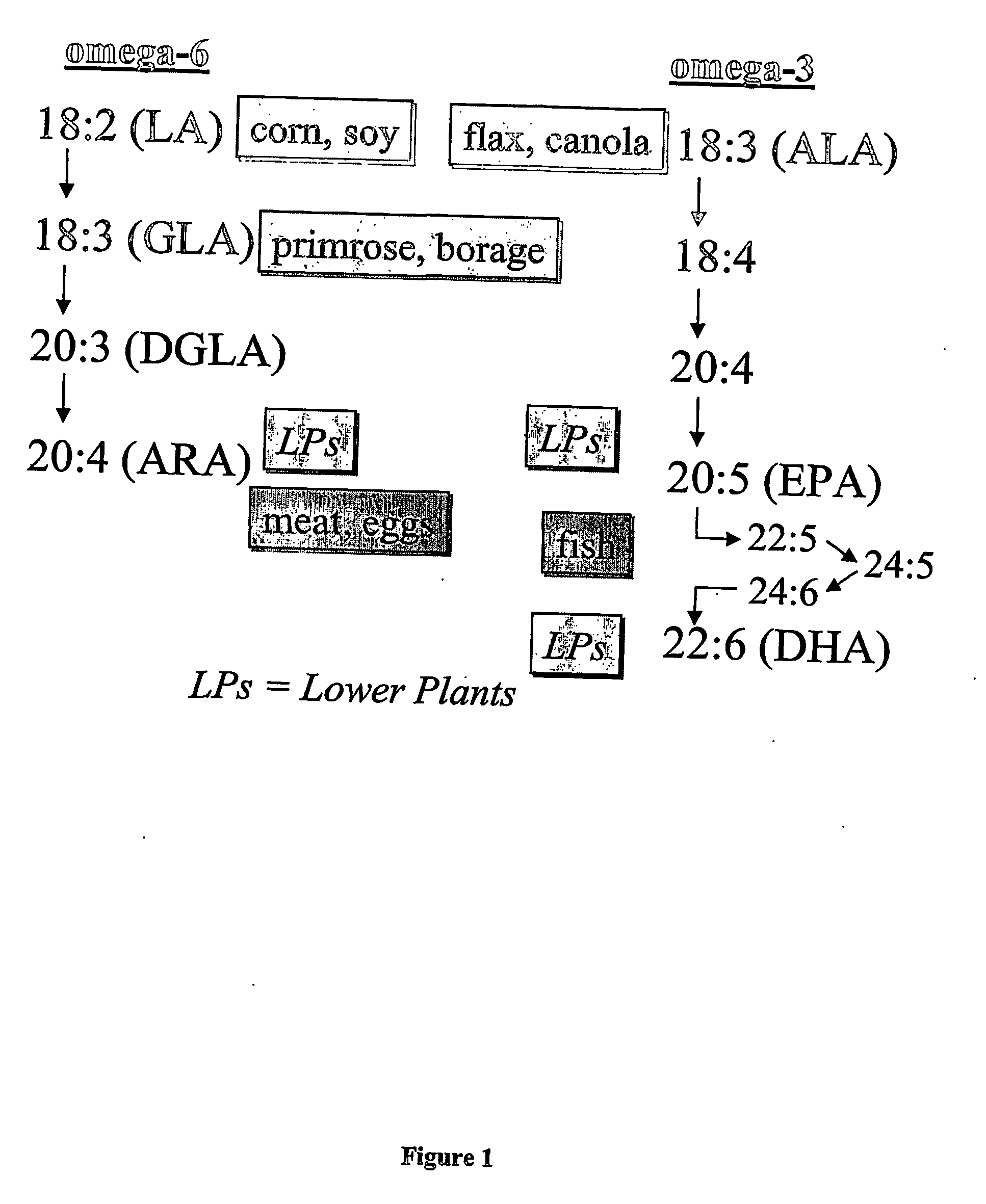Feed formulation for terrestrial and aquatic animals
a technology for terrestrial and aquatic animals and feed formulations, applied in the directions of biocide, plant/algae/fungi/lichens, medical ingredients of algae, etc., can solve the problems of high replacement level failure, harmful to human health and the environment, and reliance on animal products to deliver essential amino acids, vitamins, oils and other compounds, etc., to improve the effect of gut function, improving reproductive performance, and improving food conversion
- Summary
- Abstract
- Description
- Claims
- Application Information
AI Technical Summary
Benefits of technology
Problems solved by technology
Method used
Image
Examples
example 1
Preparation of Macroalgal, Microalgal, Lower Fungal, and Bacterial Biomass.
[0060] Macroalgae, such as Ulva spp., Gracilaria spp. and Laminaria spp., are cultured in an open earthen pond using industrial grade nutrients to provide nitrogen, potassium and phosphorus elements. Algal thalli are harvested periodically, oven dried, then ground to a fine powder using standard methods. The thalli can also be ground wet to provide a fine slurry. Heterotrophic growth of macroalgal biomass is also a possibility (Durand et al. 1997).
[0061] Photosynthetic microalgae, such as Tetraselmis spp., Spirulina spp., Nannochloropsis spp., Navicula spp., and Chaetoceros spp., are cultured in enclosed bioreactors using FeCl3, NaNO3, and NaH2PO4 enriched f / 2 medium (Guillard and Ryther 1962; Guillard 1975). Algae are harvested at stationary phase then concentrated by centrifugation, filtration, or flocculation. Algal pastes are dried (drum dried, spray dried, or the like) and ground into a fine powder.
[...
example 2
Preparation of Grow-Out Diet for Sea Bream
[0063] Sea bream feed is formulated with the ingredients listed below using standard formulation methods (Lim and Sessa 1995). The feed is designed to include at least 45% protein, 13% lipids, and 0.5% DHA. Algal-based ingredients are produced as described in Example 1. In addition to proteins and lipids, the specific algal mix also provides essential nutrients for enhancing the fish growth. For example, Ulva sp. and Laminaria sp. are rich sources of polysaccharides and glycoproteins, Haematococcus sp., and Spirulina sp. are rich in carotenoids and antioxidants, while Crypthecodinium sp. and Mortierella sp. are rich in essential fatty acids (such as docosahexaenoic (DHA) and arachidonic acids (ARA)). The ingredient mix is then extruded to 3-10 mm pellet size using a standard pellet extruder.
TABLE 1Diet composition for sea bream grow-outAlgal Mix20% Composition of Algal mixture:Ulva sp.10% Spirulina platensis (a.k.a. Arthrospira platensis...
example 3
Feeding of Sea Bream Fish.
[0064] Sea bream fingerlings at ca. 100 g size are stocked at 30 kg per m3 of seawater at a temperature of 25° C. Water quality is maintained by rapidly exchanging the tank water through mechanical and biofiltration systems. Fish are fed 4 times daily a total ration of 2% body weight and pellet size adjusted to fit the mouth opening of the growing fish. Experiment is terminated when fish reach an average commercial size of 400 g.
[0065] Daily growth rates are calculated according to the following formula: Growth rate=(Final average fish weight minus initial average weight) / n days.
[0066] Food conversion ratio (FCR) is calculated according to the following formula: FCR=Total food given / (total fish final biomass minus total fish initial biomass).
PUM
 Login to View More
Login to View More Abstract
Description
Claims
Application Information
 Login to View More
Login to View More - R&D
- Intellectual Property
- Life Sciences
- Materials
- Tech Scout
- Unparalleled Data Quality
- Higher Quality Content
- 60% Fewer Hallucinations
Browse by: Latest US Patents, China's latest patents, Technical Efficacy Thesaurus, Application Domain, Technology Topic, Popular Technical Reports.
© 2025 PatSnap. All rights reserved.Legal|Privacy policy|Modern Slavery Act Transparency Statement|Sitemap|About US| Contact US: help@patsnap.com

